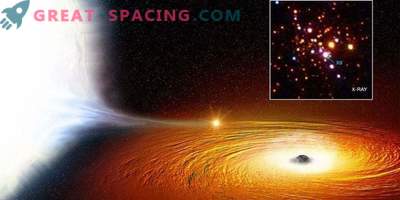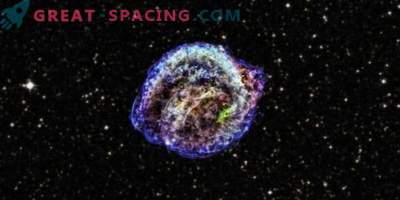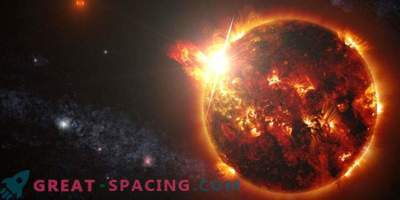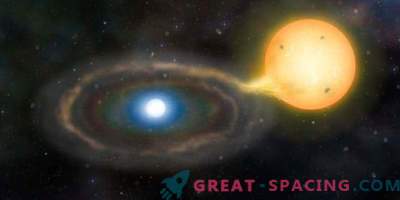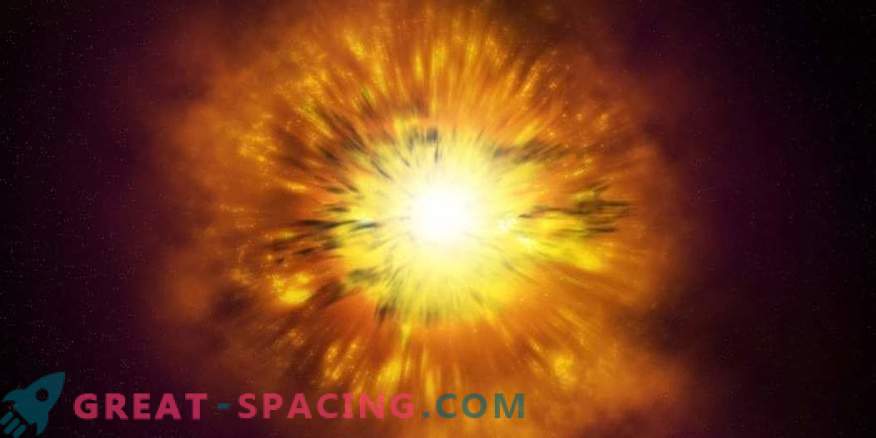
600 years ago, Korean astronomers in Seoul met a bright new star at the tail end of the constellation Scorpio. She was followed for 14 days, until the glow was gone. In ancient records it is listed that it was a new explosion, but they did not manage to find a double star system. But the latest study shows that the event could have been a dwarf eruption of new.
The idea is that the new ones pass through a long period of time after the eruption and can disappear for thousands of years, and then again become full-fledged new ones. This is the first restored new one, which has been recorded for 2500 years now!

New, found in 1437. It was reconstructed with the help of the 1-meter SWOPE telescope (Chile), where there is a filter emitting hot hydrogen gas. The early star is marked in red and is now far from the center of the hull
A new one is a hydrogen bomb formed in a binary system where a solar star is fed to a white dwarf. The second takes 100,000 years to create a critical layer of hydrogen. Then the envelope is deflated and a flash of light forms, surpassing the solar brightness by 300,000 times. For many months, scientists were looking for a location where a 1437 event could have happened. And recently a classic new shell has been found. As confirmation, played a snapshot of 1923.

Photographic records covering 6 weeks in 1942. It shows the old new from 1437
Then we had to trace the history of the object for 6 centuries and find the current position. Records from the 1940s already showed a dwarf new, which hinted at the cataclysmic double objects. Previously it was believed that after the eruption a new one becomes new, then a dwarf new and after hibernation a process of revival to a new one is underway.
These are all the life stages of stars. The only problem is that it is difficult to track this cycle directly, because it covers hundreds of thousands of years. Therefore, it can be considered a breakthrough that scientists managed to find a new one, noted by Korean scientists almost 600 years ago.


